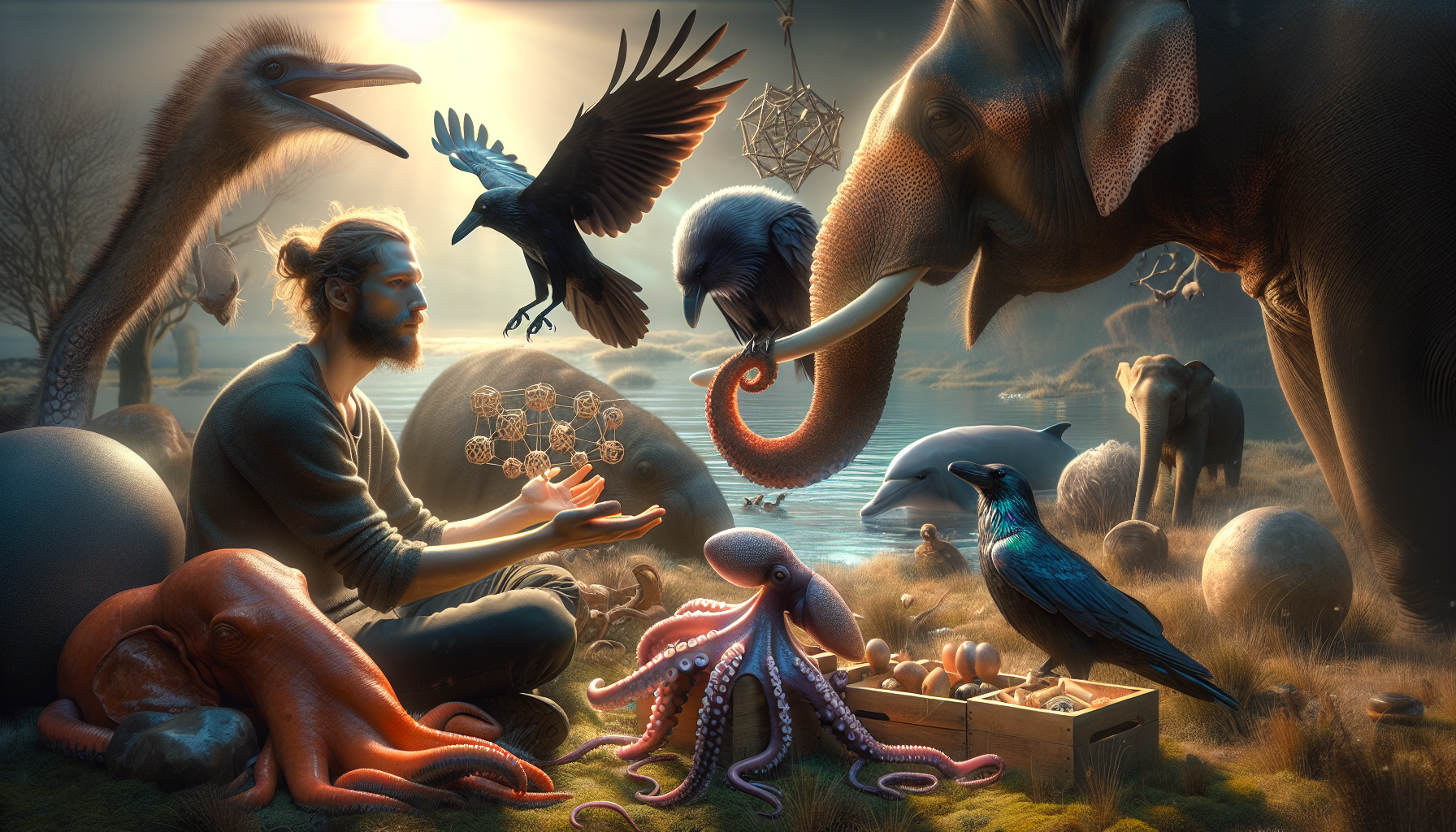In the stillness of night, as the world outside succumbs to slumber, a vibrant theater comes alive within the mind. Here, in the enigmatic landscape of dreams, the boundaries of reality blur, and the mind embarks on a journey through a realm that defies logic and order. It is a place where time bends, and the impossible becomes possible—a realm governed by the whimsical logic of the subconscious. But what happens when these ethereal experiences intersect with the rigid structures of our waking world, particularly within the legal systems that govern society? Welcome to a thought-provoking exploration of “Unlocking the Mysteries of Dream Logic: How Legal Systems Navigate the Unpredictable Terrain of the Subconscious.” 🌌
Dreams have fascinated humans for millennia, serving as both a source of wonder and a subject of intense scrutiny. Across cultures and eras, they have been interpreted as divine messages, psychological insights, and manifestations of repressed desires. Yet, despite our longstanding curiosity, dreams remain one of the most elusive phenomena of human experience. The unpredictability and abstract nature of dreams pose a unique challenge, especially when they are introduced into the structured realm of law, where precision and clarity are paramount. How, then, do legal systems grapple with the nebulous nature of dream logic? How do they adjudicate cases where the boundaries between dreaming and waking states become blurred?
In this expansive exploration, we will traverse the intricate pathways where dreams and the law intersect. Our journey begins by delving into historical perspectives, examining how different cultures and legal systems have perceived and interpreted dreams. From ancient societies that viewed dreams as omens or divine communications to modern legal frameworks that occasionally consider dream content as evidence, we will uncover the evolving relationship between the subconscious and judicial processes. This historical context provides a foundation for understanding the complexities involved in integrating dream experiences into legal discourse.
As we move forward, we will address the psychological underpinnings of dreams and their implications within legal contexts. Drawing on insights from neuroscience and psychology, we will explore how dreams can influence behavior, perceptions, and even legal decisions. What happens when a crime is committed during a state of somnambulism, or when a dream is cited as a motive or defense? By examining case studies and expert opinions, we will navigate these murky waters, shedding light on how legal systems strive to balance the unpredictable nature of dreams with the need for justice and accountability.
Finally, we will turn our attention to the ethical and philosophical dimensions of integrating dream logic into legal frameworks. What are the potential ramifications of considering dream content in courtrooms? How do we ensure fairness and objectivity when dealing with such intangible and subjective experiences? By engaging with legal scholars, ethicists, and dream researchers, we aim to stimulate a broader conversation about the role of dreams in shaping our understanding of reality and justice. As we conclude this exploration, we invite readers to ponder the profound mysteries of the subconscious and their impact on the legal systems designed to uphold order and equity. 🚀
Understanding Dream Logic: An Enigma in Legal Systems
Dream logic has long been a subject of fascination and bewilderment, not just for psychologists and neuroscientists, but also for legal professionals. The intricate and often surreal nature of dreams challenges the very foundation of logic and reality that legal systems rely on. Understanding how dream logic functions within the subconscious mind can provide insights into how legal systems might interpret subconscious influences. By exploring the unpredictability and symbolism of dreams, legal experts can better navigate cases where subconscious elements come into play.
The legal implications of dream logic arise primarily in cases where individuals claim that their actions were influenced by their subconscious minds. This intersection between dream interpretation and legal reasoning calls for a deep understanding of both fields. While the subconscious mind can harbor repressed memories or desires, it also creates scenarios that defy conventional logic. This unpredictable nature of dreams makes it challenging for legal systems to assess intent and culpability.
To illustrate the complexity, consider the example of sleepwalking, a condition where individuals perform tasks unconsciously. If a crime is committed during such an episode, determining accountability becomes a daunting task for the courts. Here, understanding dream logic is crucial, as it provides a framework for interpreting subconscious actions. Legal professionals must delve into the intricacies of how dreams influence behavior to establish a fair and just legal outcome.
Legal Precedents and Case Studies Involving Dream Logic
Throughout legal history, numerous cases have highlighted the role of dream logic in court proceedings. These cases serve as precedents for how the law navigates the subconscious realm. One notable case is that of Kenneth Parks, who, in 1987, was acquitted of murder charges after claiming he was sleepwalking. The case hinged on the argument that Parks’s actions were not conscious, emphasizing the importance of understanding dream logic within legal contexts.
Such cases often rely on expert testimony from psychologists and sleep specialists who can shed light on the subconscious processes at play. Legal systems must balance scientific insights with legal principles to deliver fair judgments. The challenge lies in differentiating between genuine subconscious influences and fabricated defenses. Here, dream logic serves as a crucial factor in determining the veracity of claims made by defendants.
To further illustrate, consider a hypothetical case where a defendant claims that a vivid dream prompted them to commit an unlawful act. The court would need to assess the plausibility of such a claim by examining the nature of dreams and their impact on human behavior. This involves understanding the symbolic language of dreams, where seemingly nonsensical elements may hold significant meaning. Legal experts must interpret these symbols to ascertain intent and culpability, ensuring that justice is served.
Comparing Dream Logic and Legal Reasoning
The table below highlights key differences and similarities between dream logic and legal reasoning, providing insights into how these two domains intersect:
| Aspect | Dream Logic | Legal Reasoning |
|---|---|---|
| Nature | Unpredictable, surreal, symbolic | Structured, rational, evidence-based |
| Interpretation | Subjective, varies by individual | Objective, based on legal statutes |
| Decision-Making | Influenced by subconscious desires | Guided by legal principles and precedents |
| Outcome | Ambiguous, open to multiple meanings | Definitive, aimed at delivering justice |
For a deeper understanding of how dream logic can influence legal reasoning, watch the following video: “Exploring the Intersection of Dreams and Law” by Dream Insights Channel.
The Psychological Underpinnings of Dream Logic
To comprehend how dream logic functions, it is essential to explore its psychological underpinnings. Dreams are a manifestation of the subconscious mind, where repressed thoughts, emotions, and desires find expression. Sigmund Freud, the father of psychoanalysis, proposed that dreams serve as a window into the unconscious mind. They offer insights into an individual’s innermost conflicts and desires, which may remain hidden during waking hours.
Dreams operate on a symbolic level, employing metaphors and imagery to convey complex ideas and emotions. This symbolic nature is a crucial aspect of dream logic, where the illogical becomes logical within the dream state. For instance, an individual dreaming of flying may symbolize a desire for freedom or escape from life’s constraints. Understanding these symbols is vital for legal professionals when evaluating cases involving dream logic.
Moreover, the unpredictable nature of dreams challenges conventional notions of reality and logic. Dreams often defy the laws of physics and time, creating scenarios that are impossible in the waking world. This surreal quality can make it difficult for legal systems to assess the impact of dreams on behavior. However, by acknowledging the unique logic of dreams, legal professionals can better navigate cases where subconscious influences are at play.
Embracing the Role of Dream Experts in Legal Contexts
Given the complexity of dream logic, the involvement of dream experts is invaluable in legal contexts. These experts, often psychologists or sleep specialists, possess the knowledge to interpret the symbolic language of dreams. Their insights can help legal professionals differentiate between genuine subconscious influences and fabricated defenses. By collaborating with dream experts, legal systems can ensure that justice is served while acknowledging the intricate workings of the subconscious mind.
- Understand the symbolic nature of dreams
- Collaborate with dream experts for accurate interpretation
- Balance scientific insights with legal principles
Legal professionals and dream experts must work together to unravel the mysteries of dream logic, ensuring that subconscious influences are fairly evaluated within the legal system. As dream research advances, new insights will continue to inform legal reasoning, bridging the gap between these two seemingly disparate fields.

Conclusion
Unlocking the mysteries of dream logic and its interaction with legal systems is a captivating journey that delves into the depths of the subconscious mind and its unpredictable nature. Throughout this exploration, we have ventured into the intricate relationship between the enigmatic world of dreams and the structured, rule-bound realm of legal systems. From understanding how dreams can influence legal interpretations to examining the role of subconscious motives in judicial processes, this article has shone a light on a relatively obscure yet profoundly significant aspect of law and psychology.
To recapitulate, we began by exploring the fundamental concept of dream logic and its characteristic departure from the logical and ordered thinking that governs our waking lives. Dreams are a rich tapestry woven from fragments of our daily experiences, emotions, and subconscious desires. They defy conventional logic, presenting scenarios that are often bizarre and surreal. This inherent unpredictability makes dreams a challenging but fascinating subject for legal scrutiny. Within the legal context, dreams can serve as evidence, influence a defendant’s mental state assessment, or even play a role in the formation of legal defenses, such as those involving diminished capacity or insanity pleas.
We delved into historical and contemporary examples of how dream logic has intersected with legal proceedings. Famous cases, such as those involving sleepwalking defenses or testimonies influenced by dream recollections, highlight the complexities legal systems face when navigating the murky waters of the subconscious. These cases underscore the importance of expert testimony, particularly from psychologists and neuroscientists, in unraveling the mysteries of dream-influenced behavior and its legal implications.
A significant portion of our exploration focused on the psychological underpinnings of dream logic. Theories from renowned psychologists, such as Sigmund Freud’s psychoanalytic perspective, offer insights into how dreams can reflect hidden desires and unresolved conflicts. Understanding these psychological frameworks allows legal professionals to better assess the credibility and relevance of dream-related evidence in court. This interdisciplinary approach emphasizes the need for collaboration between legal experts and psychologists to ensure a comprehensive evaluation of cases where dream logic plays a crucial role.
Furthermore, we examined the ethical considerations surrounding the use of dream-related evidence in legal proceedings. The subjective nature of dreams poses challenges in establishing their reliability and relevance. Balancing the need for justice with the protection of individual rights is a delicate task that requires careful consideration. Legal systems must strive to ensure that dream-related evidence is not misused or overemphasized, maintaining a fair and just process for all parties involved.
The importance of understanding dream logic within legal systems cannot be overstated. As society evolves and scientific understanding of the human mind progresses, legal professionals must remain adaptable and informed. By embracing the complexities of dream logic, legal systems can enhance their ability to deliver fair and equitable outcomes, ensuring justice is served even in the face of the unpredictable.
As we conclude this exploration, it is crucial to emphasize the broader significance of this topic. The interplay between dream logic and legal systems serves as a reminder of the complexities inherent in human behavior and the challenges faced by legal institutions. It underscores the importance of interdisciplinary collaboration, ongoing research, and open-mindedness in navigating the unpredictable terrain of the subconscious.
I encourage you, the reader, to reflect on the insights gained from this exploration and consider the implications for your own understanding of the law and the human mind. Whether you are a legal professional, a psychology enthusiast, or simply curious about the mysteries of dreams, there is much to be learned from the intersection of these two fields. Share your thoughts, engage in discussions, and contribute to the ongoing dialogue surrounding dream logic and its impact on legal systems. Together, we can continue to unravel the mysteries of the subconscious and pave the way for a more nuanced and informed approach to justice. 🌟
In closing, I urge you to explore further resources and stay informed about the latest developments in this fascinating area of study. Here are some recommended readings and active sources to deepen your understanding:
1. “The Interpretation of Dreams” by Sigmund Freud
2. “Dreams and Nightmares in Criminal Trials” by Peter R. Breggin
3. Explore online resources such as American Psychological Association and Harvard Law Review.
Thank you for embarking on this enlightening journey into the world of dream logic and legal systems. Your curiosity and engagement are vital in shaping a more informed and just society. 🌌
Toni Santos is a visual storyteller and cognitive explorer whose work delves into the mental landscapes of ancient cultures—revealing how different civilizations perceived reality, memory, and meaning long before modern psychology existed. Through symbolic imagery and narrative inquiry, Toni brings to life the divergent ways of thinking that shaped lost worlds.
His creative path is guided by a fascination with non-linear logic, oral cosmologies, and the mythic frameworks that once guided decision-making, emotion, and identity. From memory temples carved in stone to visual languages encoded in textiles, every piece Toni creates reflects the vast cognitive diversity of the human story.
With a foundation in visual design and cultural semiotics, Toni blends analytical depth with artistic expression. His work goes beyond historical reconstruction—it reawakens the embodied, intuitive, and ritual-based intelligence of ancient minds, inviting us to question the assumptions of modern thought.
As the mind behind Vizovex, Toni curates visual studies, essays, and immersive content that explore forgotten epistemologies—ways of knowing that connected people to myth, land, and each other in profoundly different ways.
His work is a tribute to:
The symbolic intelligence of pre-modern cultures
The neural diversity embedded in ancient rituals and storytelling
The deep memory systems that shaped identity and perception
Whether you’re a researcher, an artist, or a seeker of hidden wisdom, Toni invites you to enter a space where cognition is culture, and where the past speaks through signs, cycles, and symbols—one myth, one memory, one mind at a time.





